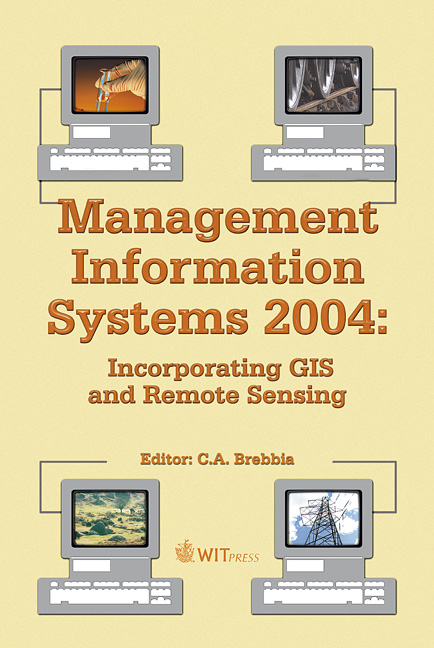Satellite Derived Impervious Surface Area As An Indicator For Water Resource Impacts In A Semi-arid Environment, Utah, USA
Price
Free (open access)
Volume
32
Pages
10
Published
2004
Size
611 kb
Paper DOI
10.2495/MIS040231
Copyright
WIT Press
Author(s)
P. Rieke Arentsen, R. R. Gillies & N. Mesner
Abstract
Impervious surface area (ISA) has recently emerged as an important ecological indicator of cumulative water resource impacts to urban watersheds. An ISA study was conducted in Cache County, Utah, to examine the potential of ISA as an indicator of water resource impacts in the region. Two LANDSAT 7 images from the spring of 2000 and, the summer of 2002 were analysed to compute ISA. Water chemistry and discharge data were collected from canals during five stormwater runoff events. Variables measured included dissolved metals, nutrients, sediment, oil and grease, fecal coliforms, and field parameters (e.g., water temperature). Percent ISA and loading coefficients were calculated for each of the contributing basins for a total of eight sampling locations. Results of linear regressions correlating mean site concentrations and percentage ISA were positive and strong (p<0.03) for total phosphorus (R2=0.86), total nitrogen (R2=0.94), orthophosphate (R2=0.94), total suspended solids (R2=0.67), boron (R2=0.82), copper (R2=0.98), lead (R2=0.96), zinc (R2=0.97), and turbidity (R2=0.67). Mean site loading coefficients were similarly correlated. Additionally, potential water quality impacts were evaluated by comparing mean site concentrations and percentage ISA with Utah and European water quality standards or pollution indicators. Those that exceeded the Utah standards or pollutant indicator values were total phosphorus, total suspended solids, lead, aluminium, and fecal coliform. Concentrations above the European standards were aluminium and iron. The Cache County study indicates that ISA is an applicable parameter as an indicator for cumulative water resource impacts and, further, suggests its application as an additional resource tool for the assessment and subsequent planning for water resource protection in urban developments. Keywords: impervious surface area, water quality, remote sensing, nonpoint source pollution, runoff, urbanisation, planning, watershed management, nutrients, metals.Keywords
impervious surface area, water quality, remote sensing, nonpoint source pollution, runoff, urbanisation, planning, watershed management, nutrients, metals.





